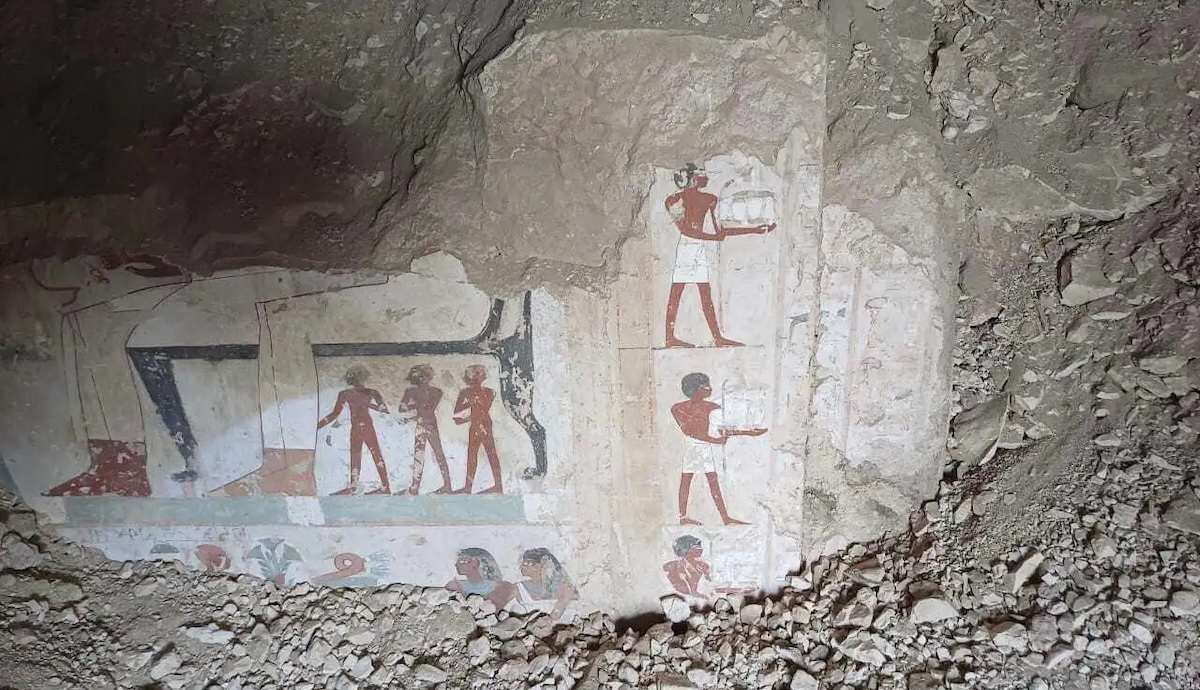
Three more tombs have been discovered at an ancient Egyptian burial complex in Luxor. The excavation site, located near the famed Karnak Temple and the Valley of the Kings, has revealed hieroglyphs and artifacts that point to three senior statesmen from the New Kingdom period.
“Significant” Discovery of New Kingdom Tombs at Luxor

According to Egypt’s Ministry of Tourism and Antiquities, the three tombs were unearthed in the Dra’Abu El Naga, an important non-royal necropolis in Luxor. The excavation, conducted by an all-Egyptian team, yielded the burials, each of which contained hieroglyphic inscriptions and artifacts. The tombs date back to the New Kingdom period, which lasted from 1550 to 1070 BCE. Often referred to as the Egyptian Empire, this era encompasses the 18th, 19th, and 20th Dynasties.
Sherif Fathy, Egypt’s Minister of Tourism and Antiquities, called the latest findings at Luxor “significant” for the country’s archaeological record in a recent social media post. This news follows the February discovery of the tomb of King Thutmose II, a pharaoh who ruled during the 18th Dynasty. It also coincides with the lead-up to the full opening of the Grand Egyptian Museum, the official date of which has yet to be confirmed. The museum, which will boast over 100,000 ancient Egyptian artifacts, partially opened to the public last year.
Hieroglyphic Inscriptions Identify Tomb Inhabitants

Mohamed Ismail Khaled, secretary-general of Egypt’s Supreme Council of Antiquities, explained in a statement that further work will be needed to fully study and restore the New Kingdom tombs at Luxor. In the meantime, hieroglyphic inscriptions inside the three tombs have allowed archaeologists to identify the names and titles of the senior statesmen who were buried there.
One of the tombs belonged to a person named Amun-em-Ipet, who likely lived during the 19th and 20th dynasties. He either worked in the temple or the estate of Amun, the king of the ancient Egyptian gods. Other than depictions of furniture carriers and a banquet, most of the scenes decorating his tomb have not survived the centuries.
The second tomb, dating back to the 18th dynasty, belonged to a granary supervisor named Baki. The third tomb, also dating back to the 18th dynasty, belonged to a person named Es, who appears to have fulfilled several roles, including supervisor in the Temple of Amun, mayor of the northern oases, and scribe.










